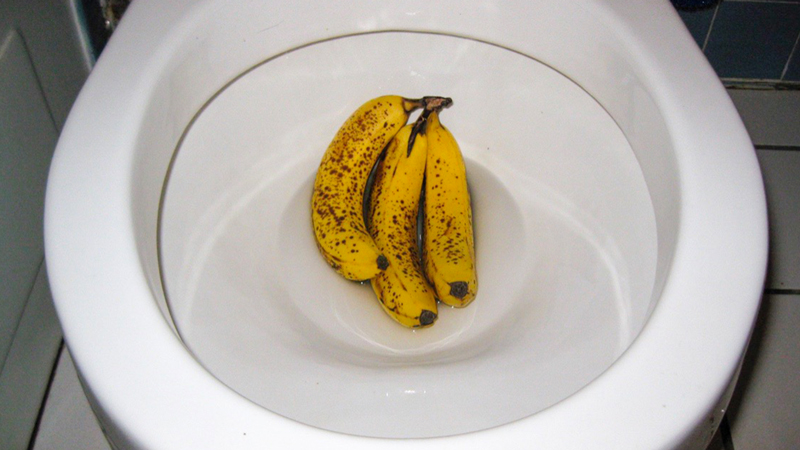Is it Acceptable to Flush Food in the Toilet?
Is it Acceptable to Flush Food in the Toilet?
Blog Article
How do you really feel on the subject of Is it safe to flush food (especially rice) down the toilet??

Introduction
Many individuals are often confronted with the predicament of what to do with food waste, specifically when it involves leftovers or scraps. One usual concern that occurs is whether it's alright to purge food down the commode. In this short article, we'll explore the reasons people might consider flushing food, the consequences of doing so, and different techniques for correct disposal.
Reasons individuals might think about purging food
Absence of recognition
Some people might not be aware of the prospective injury caused by purging food down the commode. They may incorrectly think that it's a safe practice.
Ease
Purging food down the commode might appear like a quick and easy option to getting rid of unwanted scraps, particularly when there's no close-by trash bin offered.
Negligence
In some cases, people may simply select to flush food out of large idleness, without taking into consideration the consequences of their actions.
Effects of flushing food down the commode
Environmental impact
Food waste that ends up in waterways can contribute to air pollution and harm water ecosystems. Additionally, the water made use of to flush food can strain water sources.
Plumbing issues
Purging food can cause stopped up pipelines and drains pipes, causing pricey pipes fixings and inconveniences.
Kinds of food that need to not be purged
Fibrous foods
Foods with coarse textures such as celery or corn husks can obtain entangled in pipes and create blockages.
Starchy foods
Starchy foods like pasta and rice can soak up water and swell, leading to blockages in pipes.
Oils and fats
Greasy foods like bacon or food preparation oils must never be flushed down the commode as they can solidify and cause blockages.
Appropriate disposal techniques for food waste
Utilizing a garbage disposal
For homes furnished with garbage disposals, food scraps can be ground up and purged through the pipes system. Nevertheless, not all foods appropriate for disposal in this fashion.
Recycling
Particular food packaging products can be reused, lowering waste and minimizing ecological impact.
Composting
Composting is an eco-friendly method to deal with food waste. Organic materials can be composted and used to enhance dirt for gardening.
The significance of proper waste monitoring
Minimizing ecological damage
Appropriate waste monitoring practices, such as composting and recycling, aid lessen pollution and preserve natural resources for future generations.
Protecting pipes systems
By avoiding the technique of flushing food down the toilet, homeowners can protect against pricey pipes repair work and maintain the integrity of their pipes systems.
Final thought
Finally, while it might be alluring to flush food down the bathroom for convenience, it's important to understand the possible consequences of this activity. By taking on proper waste monitoring techniques and taking care of food waste properly, individuals can add to much healthier plumbing systems and a cleaner atmosphere for all.
FLUSH FOOD DOWN THE TOILET?
FLUSHING FOOD CAN CAUSE BLOCKED DRAINS IN YOUR HOME
All of the plumbing fixtures in your home are connected to the same sewer pipe outside of your home. This outdoor sewer pipe is responsible for transporting all the wastewater from your home to the Council sewer mains. Even small pieces of food that go down the kitchen sink can cause problems for your sewer. It should therefore be obvious that flushing larger bits of food, such as meat, risks a clog in either the toilet itself or the sewer pipes. Flushing greasy food is even more problematic because oil coagulates when it cools, coating the interior lining of your pipes.
THE TOILET IS NOT A BIN
Food isn’t the only thing that people shouldn’t be flushing down the toilet. People use the toilet to dispose of all kinds of things such as tampons, makeup wipes, dental floss, kitty litter and even underwear. Water goes to great lengths to educate residents about the high costs and stress placed on wastewater treatment systems simply from people flushing the wrong stuff down the toilet. It costs taxpayers millions of dollars each year, and homeowners thousands in blocked drain repairs.
FLUSHING FOOD IS A WASTE OF WATER
Flushing food is a waste of our most precious resource - water. In June this year Level 1 water restrictions were introduced to protect water supply from drought conditions. Much of New South Wales continues to be affected by prolonged drought with recent figures revealing up to 97 per cent of the state remains in drought. Depending on whether you have a single or dual flush toilet, every single flush uses between five and 11 litres of water. In the current climate this is a huge amount of water to be wasting on flushing food that should be placed in the bin (or better yet, the compost).
https://www.jabplumbingsolutions.com.au/blog/can-you-flush-food-down-the-toilet

Hopefully you enjoyed our article on . Thanks so much for taking time to browse our blog post. Do you know another individual who is truly interested in the subject? Why not promote it. Thank-you for taking the time to read it.
Book An Estimate Now Report this page